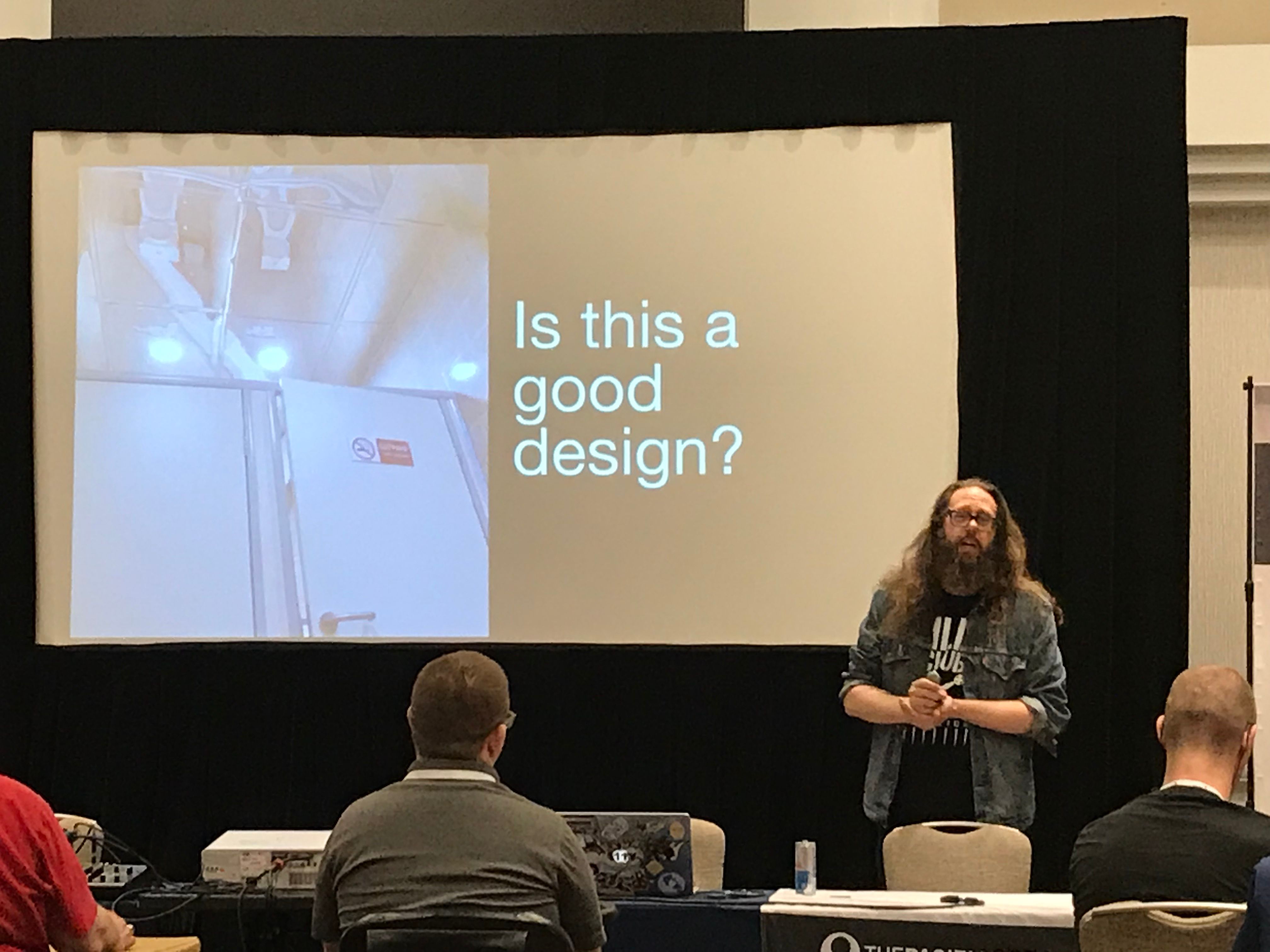My first CSUN was an amazing experience. I attended some excellent talks, I made new friends and met “in real life” some people I’d interacted with for years on social media. And of course I was able to give my talk “Accessibility: No rights without responsibilities”.
CSUN is the oldest and biggest conference on assistive technology and accessibility in North America. To quote Elle Waters, CSUN is a bit of a mix. Science fair, school reunion and geek meetup mashed together
. I had been wanting to go to CSUN for a number of years. But between living in New Zealand (high cost of travel) for many years and other conference or work engagements, I had not been able to go.
I arrived in San Diego, CA a couple days before the conference began to participate in the W3C’s EOWG face to face meeting.
Then, CSUN began! Oh my! There were approximately 4,000 people attending. There were 20 tracks of talk. The crowd was intense. Selecting talks to go to was difficult. There were a lot of very interesting sessions scheduled at the same time. I attended two presentations that I really want to highlight.
Talks
Digital Accessibility Legal Update (and more) at CSUN 2018
This session from Lainey Feingold was super informative, and quite fun. Legal updates can be a bit dry, but Lainey managed to pack the talk full of information and make it human. She began by honoring the people that lived on the land now occupied by San Diego (Luiseño, Buseño, Cahuilla, and Diequeño). She spoke a bit about what is accessibility and who is affected by lack of access. Reminding us all that accessibility is a civil right.
She quoted a federal judge, J. Weinstein.
Today, internet technology enables individuals to participate actively in their community and engage in commerce from the comfort and convenience of their home. It would be a cruel irony to adopt the interpretation of the ADA espoused by Blick, which would render the legislation intended to emancipate the disabled from the bonds of isolation and segregation obsolete when its objective is increasingly within reach.
She also said that accessibility is
- Confidentiality
- Security
- Privacy
And she reminded us that even though the ADA web regulations have been made inactive, the ADA isn’t inactive.
#SUX: Some Users’ Experience
After a grand entrance, Billy Gregory gave a solid talk full of information that made everyone think. His basic point is that unless designers and User Experience SME think about all people, the user experience really only is “Some Users’ Experience”, or SUX.

Some of the information he gave wasn’t particularly new to a lot of the audience. Yet it was wonderful reminders of things to consider. And it also provided an insight on different ways to approach similar problems.
Hallway track
A lot of things are happening in CSUN’s hallways. For me, the opportunity to finally meet people I had been interacting with online for years was a massive highlight of the conference. I left CSUN having finally met more than 15 people I knew only from Twitter, email or blogs. I also met new like-minded people. These relationships are stronger. A strong accessibility community can only help in promoting accessibility at large.
Exhibitor hall
I admit, I was surprised to find such a strong emphasis on vision-related assistive technology. I was expecting to find more devices and information for other types of impairments. There were only a couple small booths with switches for people with motor impairments.
That said, it was fascinating to see all the available technology, from really simple braille labelers for medication to more complex technology, including variations on Braille ‘n Speak.
It was also great to see so many education-related providers.
